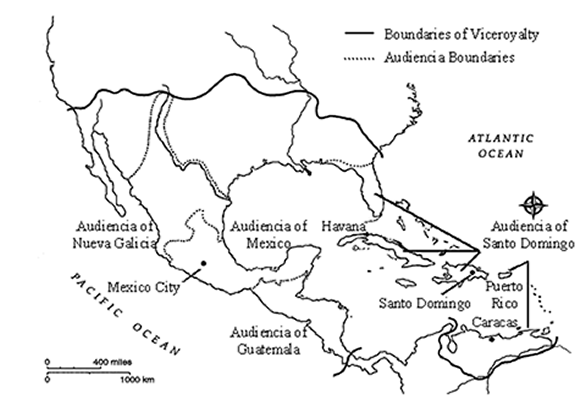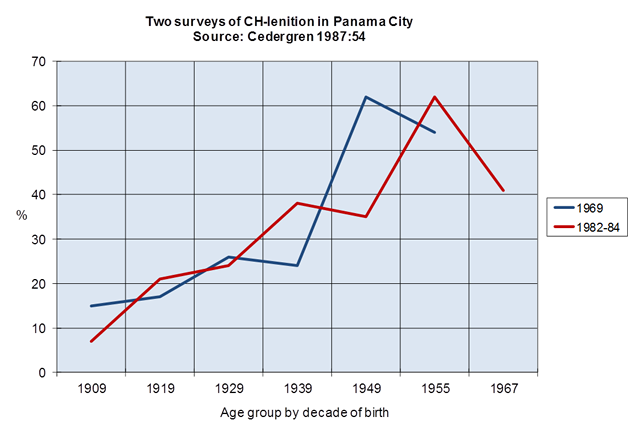
1.
Introduction

The Spanish colonial enterprise in the Americas was initiated in the Caribbean: Columbus’s famous discovery of America in 1492 actually consisted in the ‘discovery’ of Hispaniola, the island that is now split into the Domincan Republic and Haiti. For almost three decades after Colombus’s first voyage, Spanish settlement in the Americas was confined to the Caribbean islands and so the period 1492–1519 (the latter date signalling the beginning of the conquest of Mexico) is known as the período antillano.
Certain points in the Caribbean basin were of considerable importance for much of the colonial period. For example, from the mid-sixteenth century onwards the two annual fleets from Spain stopped at Havana on both the outward and the return journeys, an arrangement that brought enormous prosperity to western Cuba. The Colombian city of Cartagena de Indias (see picture below) also benefited from the fleet system and rapidly became the most important port on the Spanish Main. Puerto Rico, in contrast, was off the flotilla route between Spain and the New World and so became marginalized. And Santo Domingo, in the Dominican Republic, was initially Spain’s doorway to the Americas but the exhaustion of the Dominican gold deposits, coupled with the discovery of fabulous wealth in Mexico and Peru, soon deflected interest and investment away from the island.

2.1 Consonantal weakening
Caribbean
Spanish can be classified as a ‘radical’ or Andalusian-type dialect, implying that it exhibits consonantal weakening, particularly in syllable-final position. The pre-eminent case of this, as in Andalusia
and the Canaries, is the realization of /-s/, which may be aspirated to [h] (a phenomenon known as debuccalization), assimilated to the
consonant that immediately follows or simply elided. The three processes are illustrated below:
/oˈbispo/ → [oˈβihpo] obispo ‘bishop’
/oˈbispo/ → [oˈβippo]
/oˈbispo/ → [oˈβipo]
As can be seen from the second of the examples above, assimilation of /-s/ to the following consonant results in the latter’s gemination.
Syllable-initial /s/ is also sporadically debuccalized, although this process is documented only in certain areas, such as parts of Puerto Rico:
[ˈsiŋkohenˈtaβo] cinco centavos ‘five centavos’
[laheˈmanapaˈsaða] la semana pasada ‘last week’
In terms of the (x) variable, Caribbean Spanish tends towards weakening, i.e. /x/ → [h], as in [paˈhita] pajita ‘straw’.
CH-lenition, the reduction of /tʃ/ to [ʃ], is also documented, particularly in Puerto Rico and Panama City. In fact Cedergren’s two surveys of CH-lenition in the latter constitute an important test case for the Apparent Time Hypothesis, according to which age can be used as a proxy for real time.
Cedergren’s first survey, conducted in 1969, showed that the frequency of CH-lenition correlated strongly with age, with younger speakers exhibiting much higher levels than older speakers. Under the Apparent Time Hypothesis, which assumes that linguistic behaviour is relatively immune to change after adolescence, these findings would imply that CH-lenition was increasing in frequency across the community as a whole, with the lower frequencies of lenition among the older speakers in 1969 being the reflex of an older state of affairs in which lenition was generally less frequent. However, an alternative interpretation of the 1969 data would be that CH-lenition was subject to age grading, implying that young people tended to pronounce /tʃ/ as [ʃ] but then reduced or dropped the habit as they grew older. Under this interpretation, the data would not indicate that the community as whole was changing in respect of the pronunciation of /tʃ/.
On the basis of a single survey it is difficult, if not impossible, to rule out age grading as the cause of an age-related correlation of the type identified by Cedergren in 1969. However, she conducted a similar survey in 1982–84, the results of which are juxtaposed with those of the 1969 survey in the graphic below.

As can be seen, the two lines are close together and in fact intertwine, which suggests the 1969 correlation between CH-lenition and age was not due to age-grading. If it had been, one would expect the red line of the 1982–84 survey to be consistently below the blue line of the earlier survey. This is because by the time of the 1982–84 survey each of the age groups that were investigated in 1969 would consist of individuals who were 13 to 15 years older than they were in 1969 and so would be expected to have begun to gravitate away from CH-lenition. It seems likely then that CH-lenition is increasing in the community as a whole and thus the interpretation of the 1969 data in terms of the Apparent Time Hypothesis appears to be correct. Thus Cedergren’s research supports the assumption that age can be used as a proxy for real time.
2.2 Phenomena affecting liquids
In less formal registers, one can also encounter the Andalusian-like tendency towards neutralization of the phonemic distinction between /l/ and /ɾ/ in syllable-final position. Before a consonant
(either within a word or at a word junction) the sounds [l] and [ɾ] may be in free variation, resulting in trueques such as [reˈβeɾðe] rebelde ‘rebel’ or [belˈda] verdad ‘truth. More commonly perhaps, the liquid may undergo assimilation to the following consonant, resulting in gemination of the latter. This process is well documented for Cuba and, to illustrate
the scope of the phenomenon, a range of examples are given below (apart from the carne one, these are from Zamora Munné and Guitart 1988, p. 128):
/ˈkuɾba/ → [ˈkubba] curva ‘bend’
/ˈseɾˈfino/ → [ˈsefˈfino] ser fino ‘to be sophisticated’
/eltaˈkaɲo/ → [ettaˈkaɲo] el tacaño ‘the stingy one’
/poɾˈdonde/ → [podˈdonde] por dónde ‘where’
/ˈkaɾne/ → [ˈkanne] carne ‘meat’
/ˈpulga, ˈpuɾga/ → [ˈpugga] pulga/purga ‘flea/laxative’
Outright elision of a final liquid may also occur, but this process tends to be associated with word-final position. It affects infinitives in particular, e.g. [ˈbamohakoˈme] vamos a comer ‘let’s eat’.
Semivocalization of a syllable-final liquid to [j] was once widespread also, but contemporary reports suggest it is now limited to the Cibao area in the Dominican Republic: [ˈkajta] carta ‘letter’ and [ˈajto] alto ‘high’.
Finally, syllable-final /ɾ/ (although apparently not /l/) may be modified to [h], as in [ˈkahne] carne ‘meat’.
2.3 Nasals and nasalization
As in Andalusia, velarization of
word-final or syllable-final /n/ is not uncommon, e.g. [balˈkoŋ] balcón ‘balcony’. As is usual in such dialects, /-n/
velarization is commoner at the end of the breath group or before a word-initial
vowel than breath group-internally before a consonant.
There is also a tendency to nasalize vowels, particularly when these are adjacent to a nasal consonant: [ˈsãŋˈhwãŋ] San Juan, [saˈlĩãmõ] salíamos ‘we were going out’, [e͂mpeˈsa] empezar ‘to begin’. A concomitant of this process is the frequent elision of syllable-final nasals, as in [taˈpõ] tapón ‘cork’, [peˈlõ] pelón ‘bald’.
The particular example [ˈbĩhe͂ŋ] virgen ‘virgin’ appears to involve both vowel nasalization and the modification of /-ɾ/ to [h], the phenomenon discussed at the end of 2.2. According to this analysis, /-ɾ/, realized as [h], is absorbed into the [h] that is the normal value of the (x) variable in this type of dialect, while the vowel /i/ in the first syllable is nasalized due to vowel harmony with the final syllable (where the nasalization of /e/ follows naturally from the latter’s adjacency to a nasal consonant).
2.4 Miscellaneous
Turning now to
other consonantal phenomena, two of the most striking of these relate to the
articulation of the trill /r/. In Cuba and the Dominican Republic this segment
is routinely devoiced, as in [ˈper̥o] perro ‘dog’ and [ˈr̥oho] rojo ‘red’. In Puerto Rico, in contrast,
/r/ is frequently articulated as a uvular fricative, voiced or voiceless: [ʁaˈmon] or [χaˈmon] Ramón. The voiced
variant is more or less identical to the standard French pronunciation of the
letter r, while the voiceless variant
is very similar to the retracted articulation of /x/ that is characteristic of
male speech throughout the Iberian Peninsula (excluding Andalusia).
Voseo is now completely absent from Caribbean Spanish. Contemporary commentators such as the Cuban Esteban Pichardo speak of its survival as late as the 1830s (see López Morales 1970:136‑142) but by the 1870s it appears to have become confined to a small number of speakers from the lowest social strata. Note, however, that the form [bo] (< vos) occurs as a 2nd person singular personal pronoun in the creole Spanish used in Palenque de San Basilio.
4.1 Preverbal infinitival subjects
Unlike in English, overt subjects in Spanish occur quite freely in infinitival clauses, although in most varieties of the language the subject in this type of case must be postverbal, as in the examples below:
(1) Por llegar tarde tú a una reunión a mí me echan una bronca.
‘Because you arrived late at a meeting I get told off.’
(2) De saberlo yo, no habríamos comprado el coche.
‘If I had known that, we wouldn’t have bought the car.’
(3) El apoyar tú la propuesta me satisface. (Alarcos Llorach 1994:144)
‘The fact that you support the proposal satisfies me.’
In contrast to the above pattern, Caribbean Spanish may, at the relevant sociolinguistic or stylistic level, exhibit preverbal infinitival subjects, provided these are pronominal (see Zagona 2002:71–2):
(4) para yo entenderlo
‘for me to understand
it’
(5) antes de tú venir aquí
‘before you came here’
Preverbal infinitival subjects are also reported in the Canary Islands. Given the close links that have traditionally existed between the Caribbean and the Canaries, it would be unsurprising if the occurrence of preverbal infinitival subjects in the two areas was due to dialect contact, although it might be difficult to establish which area had the construction first.
In standard Spanish, direct wh-questions (i.e. those that ask what?, who?, when? etc.) require the finite verb to be moved to the left of the subject, resulting in subject–verb inversion as in ¿Qué quiere Miguel? ‘What does Miguel want?’ (as opposed to the ungrammatical formulation *¿Qué Miguel quiere?). However, in another coincidence with Canary Spanish, the Caribbean dialect allows wh-questions with an in situ finite verb, i.e. one that has remained in its usual position to the right of the subject. As with the preverbal infinitival subjects discussed in 4.1, the phenomenon appears to be limited to cases in which the subject NP is a pronoun:
(6) ¿Qué tú quieres?
‘What do you want?’
(7) ¿Cómo usted se llama?
‘What is your name?’
Non-inversion is unusual, however, if the subject pronoun is not directly adjacent to the verb. Thus *¿Qué tú no quieres?, for example, would apparently be unacceptable to most Caribbean speakers. It has been argued that this indicates the subject pronoun is becoming cliticized – hence inseparable from its verb – possibly to compensate for the reduction in suffix differentiation implied by consonantal instability in word-final position.
4.3 Emphatic es construction
A phenomenon that appears to have been exported northwards from Colombia and which is now general in the Caribbean is the routine use of the emphatic es construction, which is also known as ‘intensive’ ser. The examples below are from Curnow and Travis (2003:1–3), although I’ve altered the glosses for (8) and (9) to try to bring out more clearly the focus structure:
(8) ¿Ella está estudiando es derecho no?
‘It’s law she’s studying, isn’t it?’
(9) Son es contrabandistas.
‘What they are is smugglers.’
(10) Sálgase, pues, que no puedo ver es nada.
‘Get out of the way, I can’t see a thing!’
This construction appears to be have originated via ellipsis of the relative pronoun in the Spanish pseudo-cleft construction. For example, (8) might be analyzed as being derived from (11) below through ellipsis of lo que:
(11) ¿Lo que ella está estudiando es derecho no?
However, while the emphatic es construction almost certainly originated in this way, it seems to have been re-analyzed as a mono-clausal structure in which es functions as a focalizing particle. As Curnow and Travis put it (p. 4), ‘despite the apparent similarities between emphatic es and pseudo-cleft sentences, their structures are quite distinct: pseudo-cleft sentences contain a subordinate clause, emphatic es sentences do not.’ This structual difference is reflected in a number of ways, one of which being that clitic promotion is possible in emphatic es clauses but not in pseudo-clefts (as one would expect, given the bi-clausal status of the latter). Thus (12) below is perfectly acceptable in Caribbean Spanish, whereas (13) would be ungrammatical, although (14) would of course be fine:
(12) pero me quiero es encerrar con mi tía allá (Curnow and Travis 2003:3)
‘but what I want is to shut myself away with my aunt over there’
(13) *pero lo que me quiero es encerrar con mi tía allá
(14) pero lo que quiero es encerrarme con mi tía allá
4.4 Redundant subject pronouns
Spanish is a pro-drop or null subject language, meaning that pronominal subjects are silent (phonologically null) unless overt expression of the subject is required for some pragmatic purpose, such as focus or to signal a change in reference. Against this general tendency of the language, varieties of Spanish in the Dominican Republic, Puerto Rico and coastal Venezuela are reported to exhibit the redundant use of subject pronouns, as illustrated in the following extract:
Bueno, hace como . . . sí dos años me mordió el perro [. . .] Yo fui así a tocarle a la dueña de la casa para cobrarle . . . Yo estaba hablando con la señora y yo creía que el perro no me iba a hacer nada . . . (Perl & Schwegler 1998: 51)
‘Well, it was about . . . yes, two years ago, that the dog bit me [. . .] I went to see the owner of the house to charge her . . . I was talking to the lady and I didn’t think the dog was going to do anything to me . . .’
In the above case, the redundant subject pronouns highlighted have a deictic function, given that they refer to the speaker rather than to someone or something that is not part of the immediate context in which the utterance is made. Redundant subject pronouns in Spanish tend to be of this type. However, vernacular Dominican Spanish is also said to exhibit anaphoric redundant subject pronouns, which refer back to some item mentioned in the preceding discourse. This usage is illustrated (15):
(15) Cómpralas,
que ellas son bonitas.
‘Buy them, they’re nice.’
An additional feature of vernacular Dominican Spanish that runs counter to the general pro-drop nature of Spanish is the use of the neuter pronoun ello as an expletive or semantically empty subject expression, as in the two examples below:
(16) Ello hay maíz.
‘There is corn.’
(17) Ello es fácil llegar.
‘It is easy to get
there.’
Example (16) is an existential sentence, while (17) involves the extraposition of an infinitival clause. As can be seen from the glosses, English uses the expletive subject pronouns there and it respectively in these two constructions. As a pro-drop language, (standard) Spanish completely lacks equivalent expressions. Thus the standard equivalent of (16) would be Hay maíz and the standard equivalent of (17) would be Es fácil llegar.
4.5 Negative reduplication
Certain parts of the Caribbean are also noted for a distinctive negation pattern. Specifically, reduplicated no in post-verbal position, as in
example (18) below, is frequent in vernacular Dominican Spanish. Like the rhotacization of /d/, this phenomenon is characteristic of Afro-Hispanic
speech and is also found in the creole Spanish of Palenque de San Basilio.
(18) Nosotros
no vamos no.
‘We
aren’t going.’
Words associated with one or more areas of the Caribbean include the following: amarrado ‘stingy’, bituta/-e ‘food’, cambur ‘banana’, carite (type of fish), catire ‘blond’, chino ‘(young) person’, chiva ‘small bus’, chucho ‘switch’ (on an electrical circuit), fajarse ‘to fight’, fulo ‘blond’, furuminga ‘confusion/crowd’, guajiro ‘peasant’, hico ‘hammock string’, jagüey ‘banyan tree’ (a type of fig tree), maraca ‘rattle’, piche ‘sour/spoiled’, regalía ‘cinch’, túbano ‘cigar’, zafacón ‘rubbish bin’.
Alarcos Llorach, Emilio. 1994. Gramática de la lengua española. Madrid: Espasa Calpe.
Cedegren, Henrietta. 1987. ‘The spread of language change: verifying inferences of linguistic diffusion.’ In Peter H. Lowenberg (ed.), Language spread and language policy: Issues, implications and case studies (Washington DC: Georgetown University Press), pp 46–60.
Curnow, Timothy J. and Catherine E. Travis. 2003. ‘The emphatic ES construction of Colombian Spanish.’ Proceedings of the 2003 conference of the Australian Linguistic Society.
López Morales, Humberto. 1970. Estudio sobre el español de Cuba. New York: Las Américas.
Zagona, Karen. 2002. The syntax of Spanish. Cambridge: Cambridge University Press.
Zamora Munné, Juan C. and Jorge M. Guitart. 1988. Dialectología Hispanoamericana (2nd edn). Salamanca: Ediciones Almar.